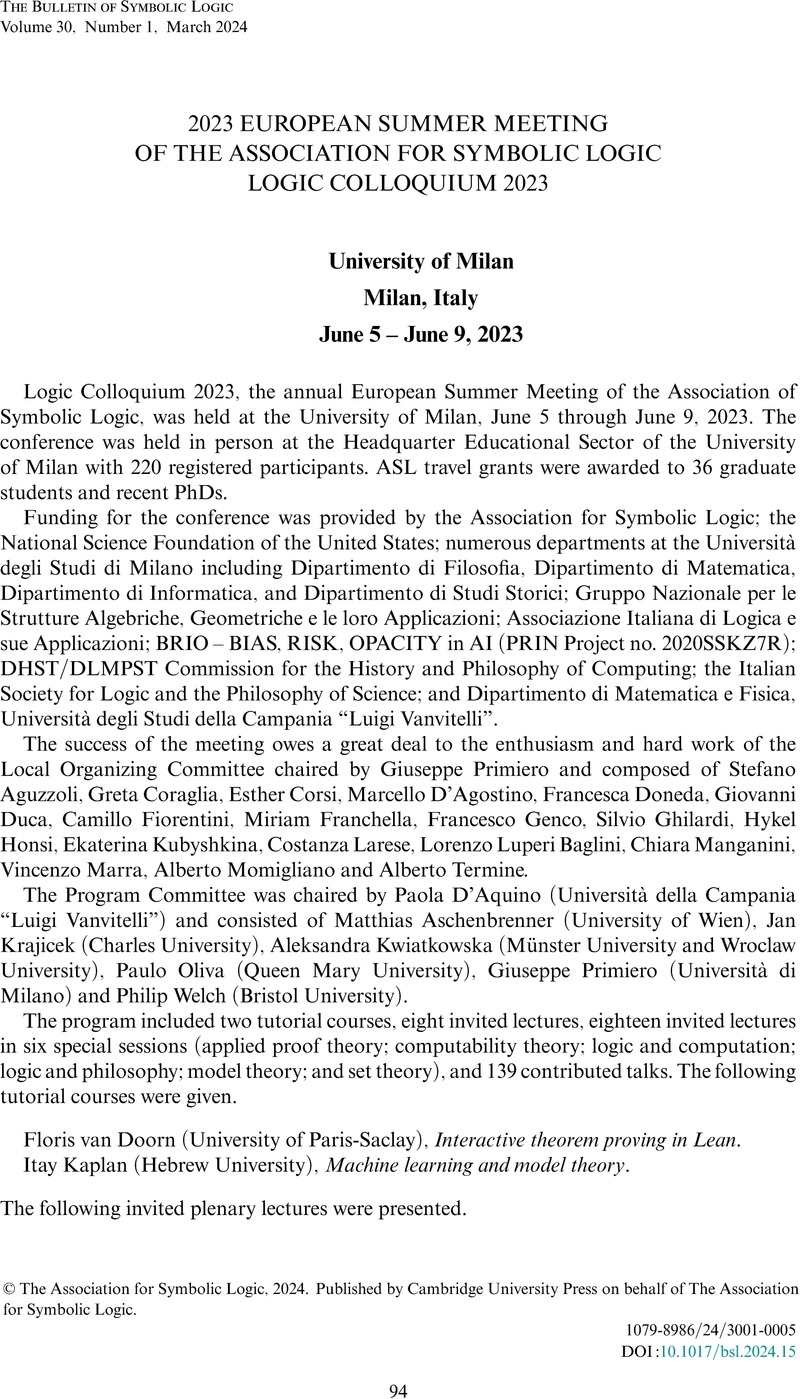No CrossRef data available.
Article contents
2023 EUROPEAN SUMMER MEETING OF THE ASSOCIATION FOR SYMBOLIC LOGIC LOGIC COLLOQUIUM 2023 University of Milan Milan, Italy June 5 – June 9, 2023
Published online by Cambridge University Press: 02 April 2024
Abstract
An abstract is not available for this content so a preview has been provided. Please use the Get access link above for information on how to access this content.

Information
- Type
- Meeting Report
- Information
- Copyright
- © The Association for Symbolic Logic, 2024. Published by Cambridge University Press on behalf of The Association for Symbolic Logic


